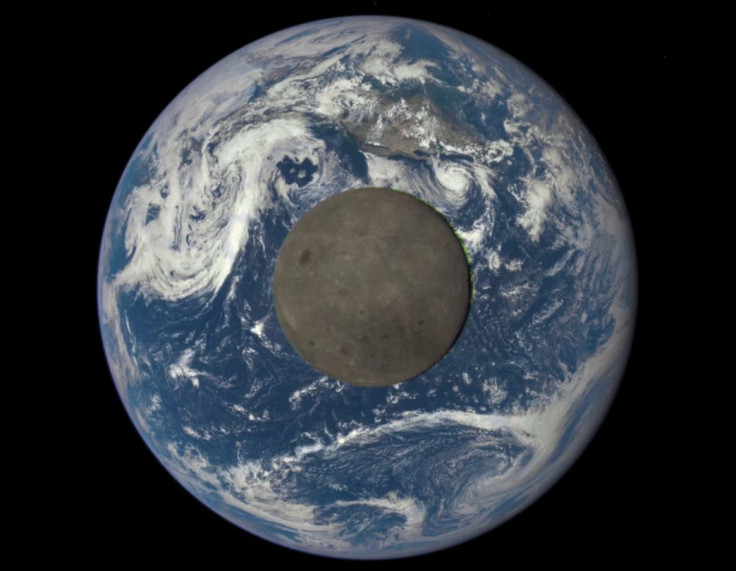Dark Side Of The Moon, Never Visible From Earth, Captured In New Images

NASA’s Earth Polychromatic Imaging Camera (EPIC), installed on the Deep Space Climate Observatory (DSCOVR) satellite, has captured images of the fully illuminated “dark side” of the moon, which is never visible from Earth. The unique view of the moon was caught on camera when it was moving in front of the sunlit side of Earth last month.
The images were taken between 3:50 p.m. and 8:45 p.m. EDT on July 16 when DSCOVR was orbiting the Earth from 1 million miles away. Other than the far side of the moon, the images also show the satellite moving over the Pacific Ocean near North America. EPIC constantly observes the fully illuminated side of the Earth as it rotates.
“It is surprising how much brighter Earth is than the moon,” Adam Szabo, DSCOVR project scientist at NASA’s Goddard Space Flight Center in Greenbelt, Maryland, said in a statement on Wednesday. “Our planet is a truly brilliant object in dark space compared to the lunar surface.”
In 2012, NASA's Gravity Recovery And Interior Laboratory lunar spacecraft sent back a unique view of the far side of the moon, showing the lunar north pole as the spacecraft flew toward the south pole.
The far side of the moon first came to light in 1959 when the Soviet Luna 3 spacecraft provided the first images of the region. The so-called “dark side” is not visible to an earthbound observer as the same side of the moon always faces our planet.
In 1968, the Apollo 8 mission’s astronauts became the first humans to view the far side when they orbited the moon. According to astronomers, the region does not have the large, dark, basaltic plains that are prominent on the Earth-facing side.
© Copyright IBTimes 2024. All rights reserved.






















